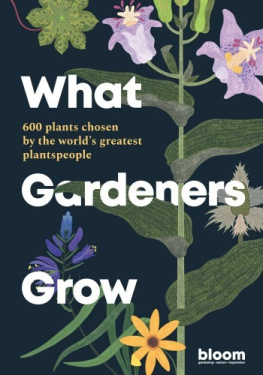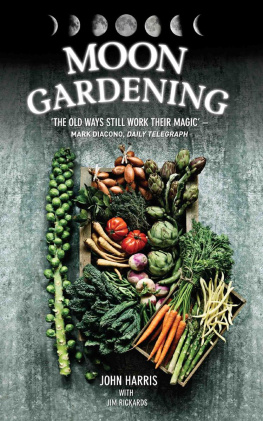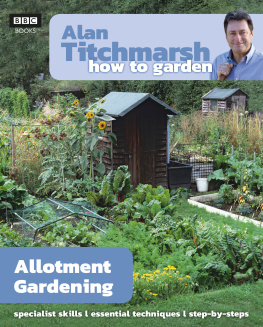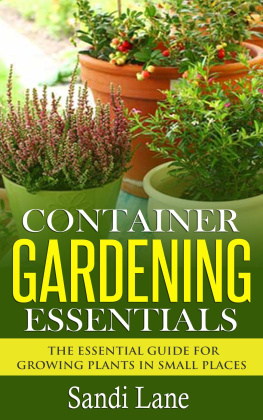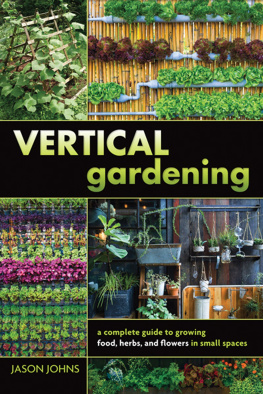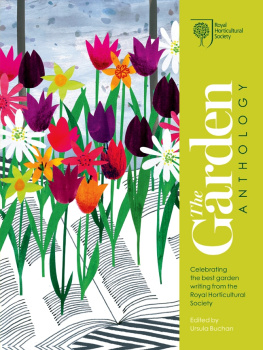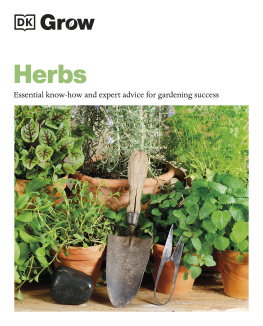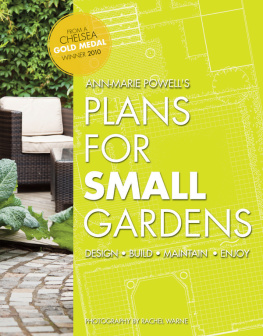Matthew Biggs
A NATION IN
BLOOM
Celebrating the people, plants and places of the Royal Horticultural Society

Foreword
Never has the work of the Royal Horticultural Society been more important or more far reaching. Gone are the days when one of its members addressed a meeting with the words No matter how small your garden, always be sure to devote at least four acres to woodland. The societys membership is no longer the exclusive province of the landed gentry, it is open to anyone who has an interest in gardening and who cares about what we do with our patch of earth, whether that be stately acres, a pocket handkerchief of a back garden or simply a window box on a balcony.
Cultivating plants and beautifying the landscape has been a passion of mine since childhood, and it is a mission that continues to enthral me. But recently I have begun to feel that its importance is dawning on a wider public. Gardening is not simply a matter of enjoying pretty summer bedding plants and hanging baskets, of growing food on allotments and vegetable patches, it is a manifestation of a wider issue that of conservation and the stewardship of the natural world. Gardeners are not only the custodians of our planets rich plant life, they are at the cutting edge of ensuring the survival of the worlds botanical riches and the environment in which plants grow. This might seem like a rather grandiose claim to make for what to some people is just gardening brightening our lives with a few roses in the front garden but it is one in which I firmly believe, and which the Royal Horticultural Society continues to champion.
Todays RHS is hyperactive in its quest to inspire gardeners, to show how important gardening really is and to offer help in the form of education and advice as well as creating a growing number of gardens across Britain where all of us can find solace and stimulation. These gardens also remind us just how lucky we are to live on a pattern of islands which, thanks to the current climate, is capable of growing a range of plants from sub-arctic flora in the north to Mediterranean natives in the south.
Whatever the future holds regarding climate change, the RHS aims to be on the ball in terms of conserving and sustaining our valuable plant resources, in helping all gardeners to be better at cultivating our rich heritage, and in ensuring, through its Campaign for School Gardening, that those to whom we bequeath our horticultural legacy recognise its importance and enjoy their own custodianship to the full. Thats not a bad aim, is it?
Alan Titchmarsh MBE VMH DL

RHS Vice-President Alan Titchmarsh, MBE, VMH, DL was the first RHS Ambassador.
Introduction
Matthew Biggs has written this book at a most relevant and prescient moment in the history of the RHS. It skilfully brings together so much of our past, present and the future. He has brought to life the essence of the learned society and how it has adapted to face the challenges of the day. He does this with the knowledge and skill for which he is renowned.
The RHS has so many different facets but the common theme across all the committees and operations is the importance of people, whether they are staff, volunteers or members. Their knowledge, experience and passion for horticulture is fundamental to the RHS in the wider sense of promoting the benefits in growing plants in all sections of society. Of course, we all see the portraits of the long-bearded botanists of the nineteenth century remind us of their passion for collecting many of the plants which are now common in our gardens. Amid our enthusiasm for the future, we must take care not to let them down.
As the membership base grows so does the RHS ability to reach more people, whether in the UK or abroad. At a time when technology bombards everybody with vast quantities of largely unwanted information, the RHS provides the calm, the theoretical centre of the wheel, where the basic principles of life can be enjoyed and promoted for the benefit of the environment, deprived urban neighbourhoods and those with mental health problems. But the outward-facing part of what we do the shows, our publishing, community work, science research, beautiful gardens all reflects the joy of horticulture that we should always promote.
The science that underpins our ability to perform these objectives is being upgraded and the foundations of the learned society being professionally curated. Without an ideological heart organisations can struggle to work out who they are and why they exist. They develop no real mission other than to bolster members for causes that change as the wind of fashion blows from different directions. This is not the RHS. We are steeped in our past, but that is a strength so long as it is used to aid our comprehension of the future.
As we develop and upgrade historic infrastructure, and the physical building work is nearing completion, we can concentrate on the way in which plants and the activity of gardening can provide spiritual fulfilment for those of us who wish to seek respite sometimes from our fast-moving, computer-obsessed generation. Mental health will be a large area of concern for society generally. Growing stuff has been the behaviour of Homo sapiens since the earliest of times we now need to reconnect with that simple activity for the sake of the health of the nation.
The RHS is there to advise those with existing horticultural knowledge, to excite those who want to grow but do not know how to start, and to provide comfort for those who are failed by our society. All this is backed up by science. A learned society which provides a strong sounding board for the future.
Sir Nicholas Bacon, Bt, RHS President

RHS President Sir Nicholas Bacon and RHS Director General Sue Biggs in the Wildflower Meadow at RHS Garden Wisley, Surrey.
Tom Stuart-Smith used clipped beech, drifts of Miscanthus sinensis Starlight and Prunus Shizuka around the Glasshouse at Wisley to create a simple, high-impact year-round design.



